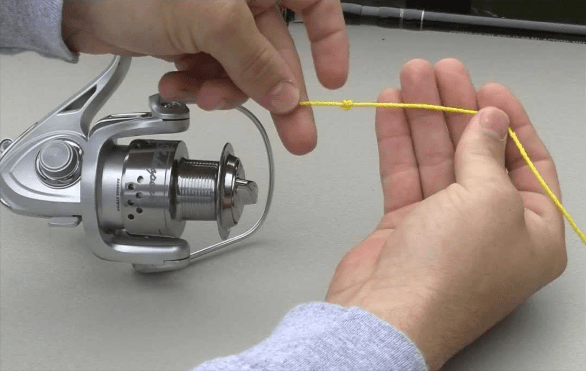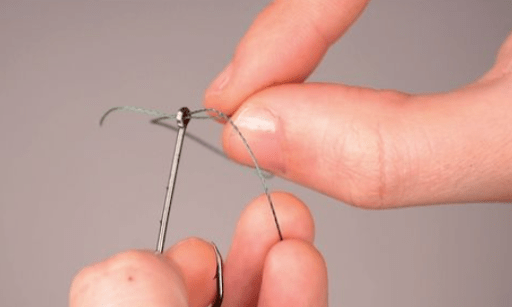How to string a fishing pole is a very crucial subject when you are ready with the wheels and rod. Thus, load the reel perfectly to enjoy a lovely catch.
Please check the line well before you string the pole. Moreover, ensure that the recommended weight is maintained. Your fishing rod must match this weight to avoid any discrepancies during fishing.
Add a stronger line to the rod. The process is undoubtedly effortless, and you will not require much time. Here is the detailed procedure for putting a string on the fishing pole.
What is the Difference between Fishing Pole and Fishing Rod?
A Fishing Rod facilitates catching the fish due to the hook attached at one end. Casting lures is easy with this equipment with line guides. Moreover, you will find a reel attached to the rod.
On the other hand, Fishing Pole is a wooden stick convenient for placing the preferred bait. At the tip, you will come across the attached line.
How to String a fish pole(step-by-step guide)
Without attaching the string correctly, you will not be able to use the fishing pole fruitfully. Therefore, we present a step-by-step guide highlighting every action you must follow.
Accomplish your target by practicing the steps. Let us start this incredible journey with the rod.
Step #1: Open the tag end of the bail and attach the fishing line to your rod

Step #2: Tie the knot at the center (preferably an arbor knot)

Step #3: Spool the reel and keep on loading till the line becomes 1/8th of an inch from the rim

Step #4: Thread the end of the tag and attach the line to the hook

Types of strings to choose from?
Before you learn how to string a fishing pole, it is essential to select a durable string. Fishing strings or lines establish the direct connection between the marine target and you. However, it is up to you which string to choose.
Here is a list of some popular strings angler often uses to catch fish.
Braid Fishing Line
This type is a solid line leading to attaching more lines on the spool. Furthermore, it is ideal for spinning reels as you will not have twisting problems here.
You can cast further with this robust tool. The trolling will also be deeper. Besides, the braid line sinks faster in water, letting you get to the target faster.
However, it does not come with a stretch and may be slippery. So, the angler must be conscious while holding it tight.
Monofilament Line
This is one of the highly popular types of strings and is available in multiple varieties. You find it in different colors and varying strengths.
The affordable line is stretchable and thus facilitates smooth shock absorption.
Although tying any knot is easy here, “memory” can be a limitation. It refers to the creation of loops just like the spool shape.
Fly Fishing Line
This fishing string is unique due to the varying weights it can take. Besides, the fly rod should have a matching heavy line.
A Tippet with multiple strengths is the leader in this case.
Wire Fishing Line
The Wire Fishing line is the perfect match if you are targeting some toothy fish. You can also use it advantageously for trolling deeper.
However, for that, the spools for the reels must be very hard. There are braided varieties of this single-strand string.
Some more string types are there. You may take suggestions from an expert angler to determine the right line for your pole.
How to find the right fishing pole?
It is not sufficient to know only how to string a fishing pole. Sometimes, selecting the best rod for fishing can be cumbersome and complicated.
We have come up with some simple tricks for you.
Speed of the Rod
Always check the speeds of the fishing rods before you take them. The resultant effects of fast and slow action rods will differ on the fish.
The Rod Types
Rods can be of several types. You need to examine the fiber well before buying it.
Information on Rods
Be aware of all the details regarding features and how it works while acquiring a fishing rod. Discuss with the seller to get precisely what you need without any issues. Thorough information about structure and speed is essential for any fishing pole.
Power of Rod
The ease of hooking depends on the ability of the pole. Therefore, you should check the resistance of the bend and be sure of its capacity. Your rod should be heavy or light as per the bait you will use.
Related read,
Conclusion: String a Fishing Pole
We hope the above content will help prepare an angler for the next plan. Besides, how to string a fishing pole is not a tricky process if you are confident. Check out from your local fishing gear shop which pole variety suits your purpose. A perfect combination of reel and rod can make you a superb angler.
FAQ: String a Fishing Pole
Regular use of a fishing pole will gradually diminish its life span. However, changing the string once or twice every year is recommended.
The test is the capacity of a fishing rod. Therefore, the quality of the rod will be good when the test matches the weight of your target fish.
According to the fishing pole wrapping guides, size A and D threads are the best. You have to keep the size D thread on the top, while size A will remain underneath.
The thickness will depend on the diameter of a fishing string. Usually, a 15 lb monofilament with a 0.35mm diameter is an ideal string.
The fishing strings are typically made from nylon, with perfect smoothness.
There is no specific lifespan of a fishing rod. The more you use it cautiously, the more it will last. A fishing rod can serve you for decades.
Fishing within 150 to 100 yards will require a maximum six-pound test line.



